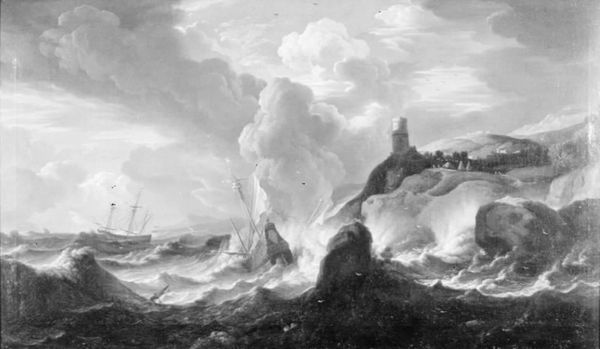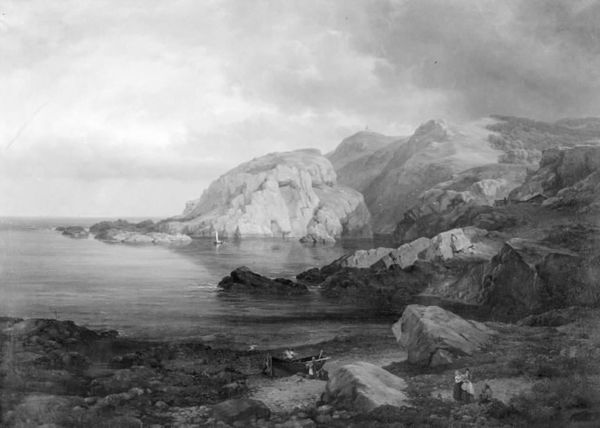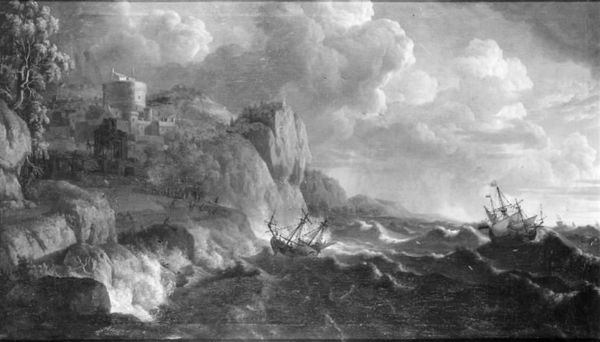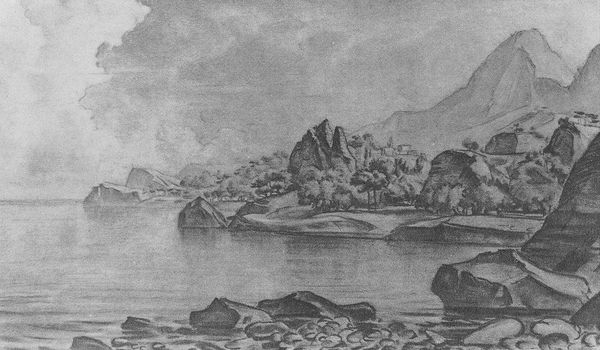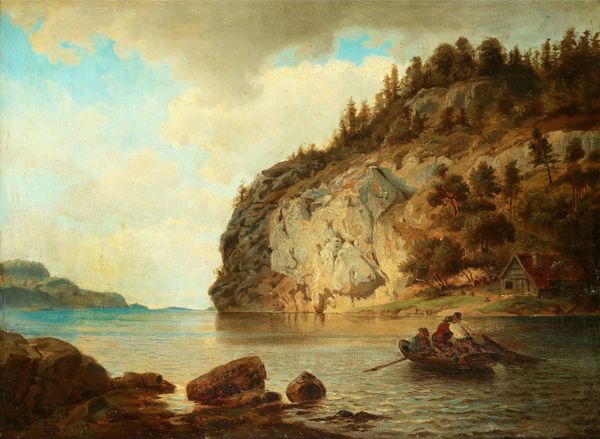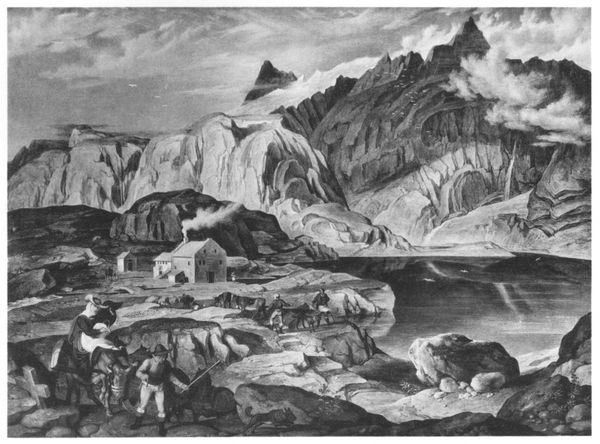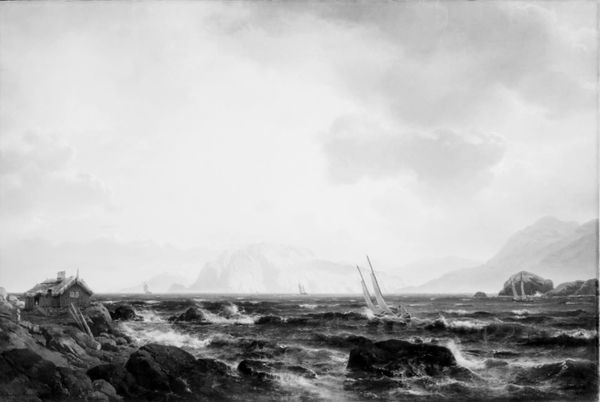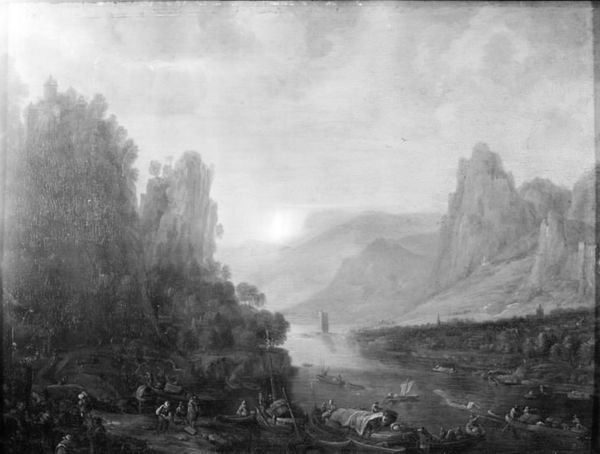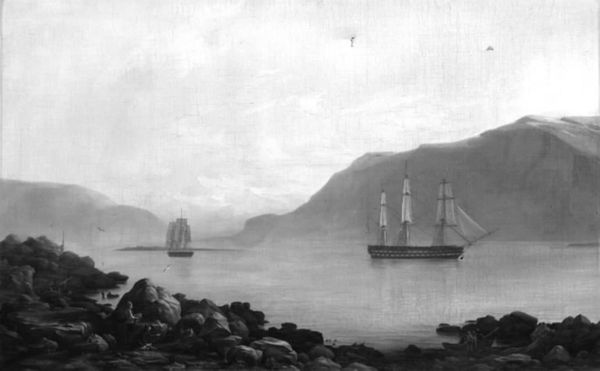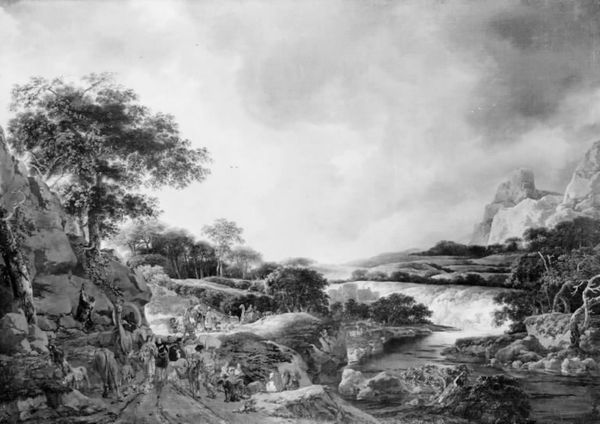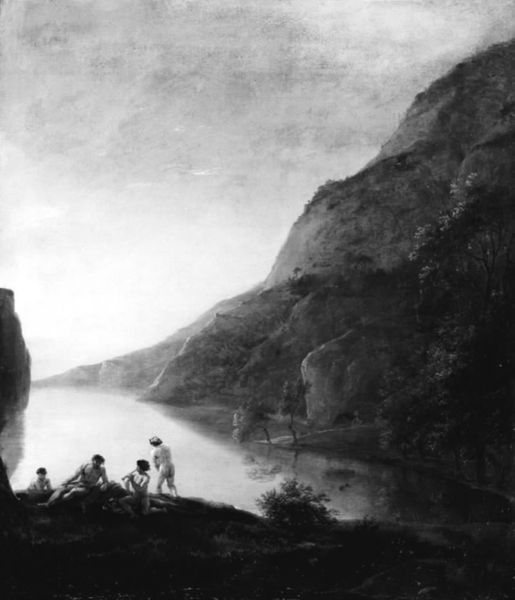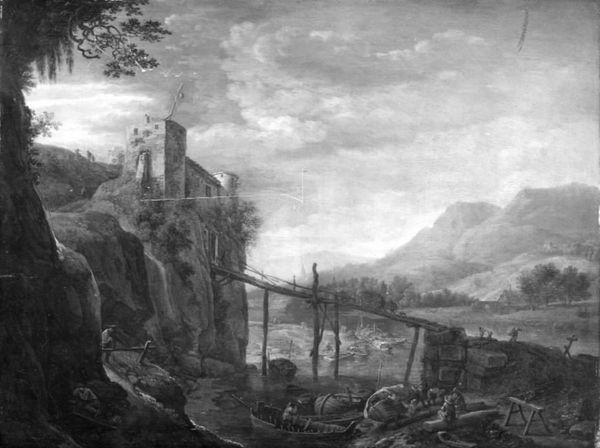
Indsejlingen til Holmestrand i Norge med vejen fra Drammen langs klippevæggen. Tidlig morgen 1797 - 1845
0:00
0:00
painting, oil-paint
#
black and white photography
#
painting
#
countryside
#
oil-paint
#
landscape
#
rugged
#
romanticism
#
monochrome photography
#
fog
#
cityscape
#
monochrome
#
skyscape
#
realism
#
monochrome
Dimensions: 49 cm (height) x 64.5 cm (width) (Netto)
Curator: This artwork, "Indsejlingen til Holmestrand i Norge med vejen fra Drammen langs klippevæggen. Tidlig morgen," or "The Approach to Holmestrand in Norway with the Road from Drammen along the Cliff Wall. Early Morning," comes to us from J.P. Møller, dating between 1797 and 1845. It’s currently held at the SMK, the National Gallery of Denmark. Editor: The piece immediately strikes me with its strong compositional elements – the way the cliff dominates the right side, creating a stark contrast with the open sea on the left. The monochromatic palette adds a timeless, almost dreamlike quality. Curator: Absolutely. This painting reflects the rise of Romanticism and its fascination with sublime landscapes. Think about the socio-political climate of the time, the rise of nationalism, and how landscape paintings served as a way to construct and celebrate national identity, particularly in Norway. This scene becomes less about a specific location and more about a representation of Norwegian strength and rugged beauty, implicitly compared to the rise of a more unified political landscape. Editor: True, the cultural context is essential, but let's not neglect the artist's meticulous handling of light and shadow. Notice how the highlights on the rocks guide your eye through the composition and give form to those large forms on the foreground, and that repetition of lighter color down to the small town at the end of the bay, guiding the eye deeper into the image. The painting uses pictorial techniques to instill feelings. Curator: Considering the absence of vibrant color, the gradations are certainly powerful, evoking a strong sense of space and distance and playing with what Hegel referred to as absolute idealism. Also, I want to reflect on the positioning of the small figures resting in the lower right of the frame and those traversing on the top right. I'm immediately wondering: who are they and why does the painter draw the eye so prominently to them? Do these small, presumably local populations see themselves in these painterly representations, and does that painting fairly and accurately communicate what life might be like for those small and at-risk communities? Editor: That reading is certainly valuable, but for me the pure composition and dramatic atmosphere of the scene speak for themselves, a study in balance. Regardless, both readings can certainly stand side by side. Curator: Yes, and these multiple perspectives hopefully will grant greater value to our listeners. Editor: Indeed.
Comments
No comments
Be the first to comment and join the conversation on the ultimate creative platform.
